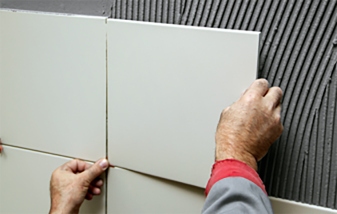
Oct . 16, 2024 23:24 Back to list
Understanding the Composition and Sources of HPMC in Various Applications
HPMC, or Hydroxypropyl Methylcellulose, is a semi-synthetic polymer derived from cellulose, a natural polymer found in the cell walls of green plants. The significance of HPMC lies in its versatile applications across various industries including pharmaceuticals, construction, food, and cosmetics. Understanding what HPMC is made from provides insight into its properties, functionality, and the wide range of uses that stem from its unique chemical structure.
Origin and Production
HPMC is produced through the modification of cellulose, which originates from wood, cotton, or other plant fibers. The process begins with the extraction of cellulose from these natural sources. Once isolated, the cellulose undergoes a series of chemical treatments that involve the introduction of hydroxypropyl and methyl groups. These modifications alter the physical and chemical properties of cellulose, yielding a product that retains the structural backbone of cellulose while gaining enhanced water solubility and improved film-forming capabilities.
Specifically, the hydroxypropyl groups are introduced through the reaction of propylene oxide with cellulose in an alkaline environment. Similarly, methyl groups are introduced using methyl chloride. The proportions of hydroxypropyl and methyl substitutions can be adjusted during manufacturing, resulting in HPMC variants with different properties, such as viscosity, solubility, and gel-forming ability.
Properties of HPMC
The modifications imparted to cellulose through the production of HPMC give rise to several desirable characteristics
1. Water Solubility One of the defining features of HPMC is its ability to dissolve in water, forming viscous solutions. This water-soluble nature is vital for its applications in pharmaceuticals and food products, where it acts as a thickening agent, stabilizer, or emulsifier.
2. Thermal Stability HPMC exhibits thermal stability, making it suitable for use in hot processes, such as those found in construction materials or food preparation.
3. Film-Forming Ability HPMC can form flexible films when dried, which is especially useful in coatings for tablets in the pharmaceutical industry, providing protection and controlled release properties.
what is hpmc made from

4. Biocompatibility Being derived from cellulose, HPMC is generally recognized as safe (GRAS) for food and pharmaceutical applications, as it is non-toxic and biocompatible.
Applications of HPMC
The applications of HPMC are extensive and varied
- Pharmaceuticals HPMC is widely used as an excipient in drug formulations. It serves as a binder in tablets, a thickener in liquid formulations, and a coating material that controls the release of the active ingredients.
- Construction In the building industry, HPMC is incorporated into cement-based formulations, such as tile adhesives and plasters, to improve workability and water retention.
- Food Industry HPMC is utilized as a food additive, serving as a thickener, stabilizer, and emulsifier. It's common in low-fat and gluten-free products due to its ability to enhance texture.
- Cosmetics The cosmetic industry employs HPMC in formulations for its thickening properties and its ability to form films, enhancing the product's texture and stability.
Conclusion
In summary, HPMC is a versatile compound made from cellulose, intricately modified to enhance its properties and broaden its application scope. By understanding what HPMC is made from, we appreciate its role as a crucial ingredient in numerous sectors. Whether it's enhancing drug delivery, providing stability in food products, or improving the texture of construction materials, HPMC stands out as a prime example of how a naturally derived polymer can be transformed to meet the demands of modern industry. As technology advances, the potential for HPMC continues to grow, promising innovative solutions for future applications.
-
Versatile Hpmc Uses in Different Industries
NewsJun.19,2025
-
Redispersible Powder's Role in Enhancing Durability of Construction Products
NewsJun.19,2025
-
Hydroxyethyl Cellulose Applications Driving Green Industrial Processes
NewsJun.19,2025
-
Exploring Different Redispersible Polymer Powder
NewsJun.19,2025
-
Choosing the Right Mortar Bonding Agent
NewsJun.19,2025
-
Applications and Significance of China Hpmc in Modern Industries
NewsJun.19,2025







